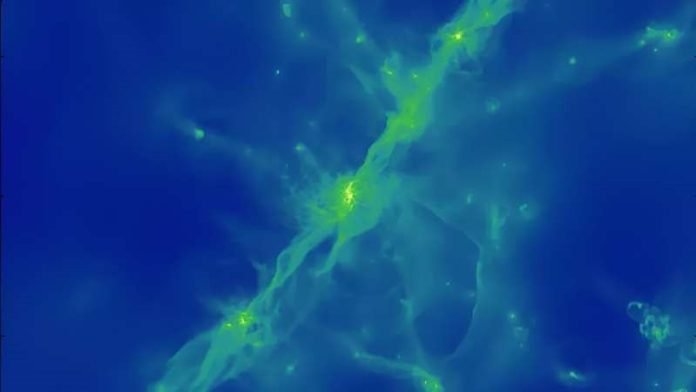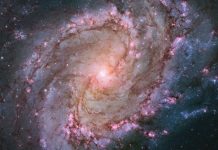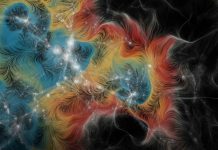
In a quest to understand the origins of galaxies, stars, and planets, a group of astronomers has embarked on a groundbreaking journey.
Using the power of supercomputers, they have simulated the formation of galaxies, tracing back to the Big Bang 13.8 billion years ago.
This ambitious project, led by an international team of 160 researchers from 60 institutions, aimed to correct the inaccuracies that have long plagued these simulations.
The task was monumental, consuming a hundred million hours of computer time over eight years.
The team’s leaders, Santi Roca-Fàbrega from Lund University, Ji-hoon Kim from Seoul National University, and Joel R. Primack from the University of California, spearheaded this effort to refine our understanding of galaxy formation.
Computer simulations have become an essential tool for astronomers to predict how galaxies evolve.
However, these models come with their own set of challenges, such as limited resolution and assumptions about complex processes like star formation and the dynamics of the interstellar medium. These limitations can skew the results, making it difficult to draw accurate conclusions.
To overcome these obstacles, the researchers embarked on what they call a “supercomparison” of different simulation techniques.
By comparing the results and methodologies of the world’s leading galaxy simulation programs, they aimed to identify and minimize sources of error. This collaborative effort is known as the CosmoRun simulations.
The team’s findings, documented in three papers accepted for publication in The Astrophysical Journal, provide new insights into the formation of disk galaxies like our Milky Way.
They suggest that these galaxies began forming much earlier in the universe’s history than previously thought, a conclusion supported by observations from the James Webb Telescope.
One of the most significant achievements of this research is addressing the “missing satellites problem.” This long-standing issue, which revolves around the discrepancy between observed satellite galaxies and those predicted by simulations, has finally found a resolution.
The researchers discovered that the distribution and behavior of gas around galaxies play a crucial role in creating more realistic simulations, shifting the focus from the previously emphasized star distribution.
This extensive research effort not only advances our understanding of how galaxies form but also sets the stage for even more accurate simulations in the future. As technology and methodologies improve, the team is optimistic about solving more mysteries of the universe.
Through their dedication and collaborative spirit, the researchers have taken a significant step forward in piecing together the complex puzzle of the universe’s evolution.
Their work highlights the importance of cross-disciplinary cooperation in advancing scientific knowledge and offers a glimpse into the origins of our cosmic home, the Milky Way.
The research findings can be found in arXiv.
Copyright © 2024 Knowridge Science Report. All rights reserved.



